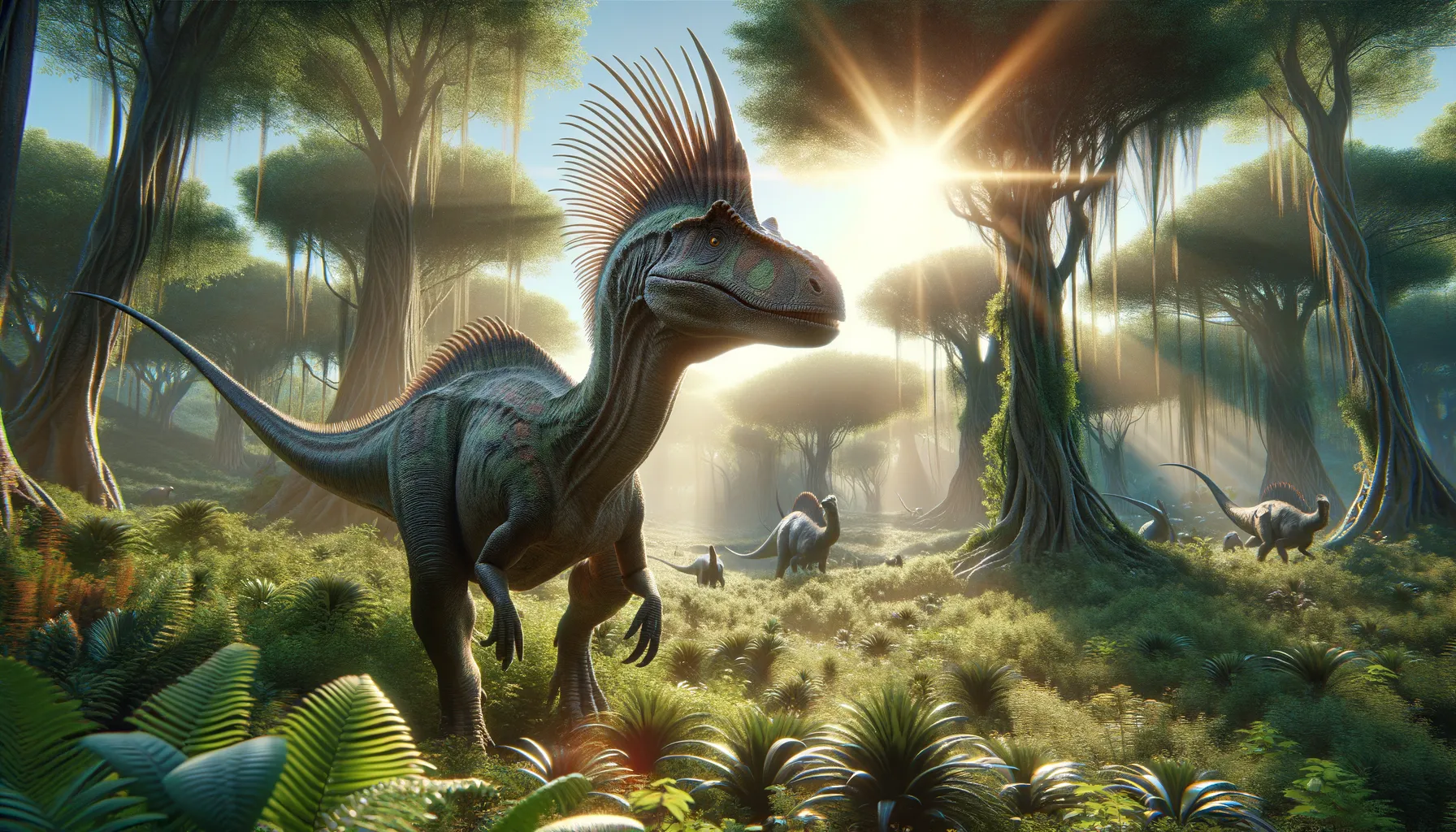
Nipponosaurus
A majestic giant of the Late Cretaceous era.
Period
Cretaceous
Length
Roughly 8 meters (26 feet) long.
Height
Approximately 2 meters (6.6 feet) at the hips.
Weight
Around 2,000 kilograms (4,400 pounds).
Nipponosaurus was a duck-billed dinosaur, known for its distinctive crested head. It roamed the Earth during the Late Cretaceous period and was a herbivore, feeding on the plentiful vegetation of its time. Its fossils, discovered in Japan, highlight its historical significance as one of the few dinosaurs found in that region. Despite its large size, it shared its environment with other herbivores and a few predators.
Diet
Nipponosaurus was strictly herbivorous, feeding on diverse plant life available in its habitat. Its diet primarily consisted of ferns, conifers, and cycads, which were common in the Cretaceous landscape.
Hunting
As a herbivore, Nipponosaurus did not hunt for food. Instead, it foraged plants and used its specialized teeth to grind tough vegetation, allowing it to extract the necessary nutrients.
Environmental challenges
Nipponosaurus faced several environmental challenges, including changes in climate and competition for resources with other herbivores. Predation by large theropods also posed a threat, although it had some protection in its herding behavior. Seasonal variations in plant availability would have required migration or adaptation in its feeding patterns.
Speed
Likely slow moving due to being a large herbivore.
Lifespan
Estimated to be several decades.
First discovery
Discovered in 1934 in Japan by S. Hasegawa.
Fun Facts
- Nipponosaurus was discovered in Japan in 1934, making it one of the first dinosaurs found in the country.
- The full name 'Nipponosaurus sachalinensis' refers to the region where it was found, which is part of modern-day Sakhalin Island.
- Nipponosaurus was a herbivorous dinosaur, meaning it only ate plants.
- This dinosaur belonged to the hadrosaurid family, commonly known as 'duck-billed dinosaurs' due to their flat, broad snouts.
- It lived during the Late Cretaceous period, around 70 million years ago.
- Nipponosaurus was relatively small for a hadrosaur, measuring about 7 to 8 meters in length.
- The discovery of Nipponosaurus helped paint a clearer picture of the distribution of dinosaurs in Asia during the Late Cretaceous.
Growth and Development
Young Nipponosaurus likely grew rapidly to avoid predators, with adult coloration and size achieved in a few years. They experienced a notable growth spurt during their early life, which was crucial for reaching maturity. Studies suggest a relatively gradual development compared to some faster-growing dinosaur species.
Habitat
It inhabited regions that are part of modern-day Japan, which were likely lush and densely vegetated. The environment provided ample food and suitable conditions for large herbivores. Habitats ranged from river deltas to coastal floodplains, allowing for a rich and diverse ecosystem.
Interaction with other species
Nipponosaurus shared its habitat with other dinosaurs, both herbivores and carnivores. It likely lived in groups, which offered protection from predators and allowed for shared resources. Symbiotic relationships with smaller animals may have included soil aeration and seed dispersal.
Natural lifespan
Nipponosaurus had a natural lifespan of several decades.
Reproduction
Like many dinosaurs, Nipponosaurus reproduced by laying eggs, likely in nests. Parental care might have been present to some extent, ensuring the survival of the young. The young were probably nurtured for some time before becoming more independent.
Social behaviour
Nipponosaurus displayed social behavior, possibly moving in herds to fend off predators. This social structure also facilitated communication and coordination while foraging. Herding instincts provided safety in numbers and efficient use of available resources.
Fossil locations
Fossils of Nipponosaurus have been discovered in Japan, marking it as one of the few dinosaurs named from such finds. Notably, the fossils were unearthed on the island of Sakhalin, which provides critical insights into its distribution and paleobiology. These discoveries aid paleontologists in understanding the ecological dynamics of the region during the Late Cretaceous.
